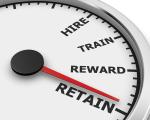CHICAGO — Key performance indicators (KPIs) can be a business owner’s best friend when it comes to measuring the effort and expenses of operating a company and balancing those numbers with the results they are getting.
In Part 1 of this series, we examined some of the most important KPIs that drycleaning company owners should be tracking, and in Part 2, we looked at ways to start putting a plan together based on data. Today, we’ll conclude by looking at how tracking KPIs can reveal red flags in a company’s operation, and the importance of making proper comparisons.
Putting Numbers into Action
Tracking KPIs can alert an owner to potential problems as a business evolves, especially when profitability is tracked correctly.
“Lots of people are experimenting with diverse products and services, which I think is smart,” says Diana Vollmer, managing director of the Ascend Consulting Group. “But what scares me is when they devote a lot of time and energy to a specific product line without doing the analysis to determine if that line is profitable.”
Vollmer uses the example of the explosion of wash-dry-fold services that came about as a reaction to the pandemic.
“Cleaners are replacing a lot of drycleaning and laundry pieces in the plant, but replacing them at a much lower margin,” she says. “Let’s say that the plant used to have four main categories: dry cleaning, laundry, restoration and wash-dry-fold. Let’s say wash-dry-fold used to be 10% of the plant’s labor and the building’s overhead. But as the dry cleaning and the laundry shrank, some plants started dedicating as much as half of the plant space to wash-dry-fold.”
The problem, she says, comes in the way wash-dry-fold is priced—often by the pound, by the bag, or as a subscription service.
“Many dry cleaners are still pricing it the way they did when it took only 10% of the infrastructure cost,” she says. “That’s a red flag, and I would say they need to do a very careful analysis. Their labor and their machines are very busy doing that work, and the profitability is just not there.”
This profitability issue, she says, jumps out immediately if the cleaner is paying close attention to his or her KPIs.
Finding the Right Yardstick
Numbers and data aren’t very useful if they are viewed in a vacuum. In order to chart a company’s growth—or decline—it’s important to know what to compare them to.
If an owner hasn’t already done so, define a starting point, urges Kermit Engh, who owns Fashion Cleaners in Omaha, Nebraska, and is managing partner of Methods for Management (MfM), a consulting firm for the drycleaning industry.
“The first step I’d have them do is to look backwards to see how they were doing on each of those KPIs they wish to monitor,” he says. “Put a stake in the ground, so to speak, from which to then move forward.”
Engh believes that getting expert help in interpreting KPI data can be extremely helpful, especially in the beginning.
“I think their first contact should be their CPA,” he says. “They’re familiar with the ‘business’ side of the business. Second, they can ask their banker as to what they like to see for their clients.”
It’s also helpful for owners to look outside the walls of their company, Engh says. With production numbers, for example, many equipment companies can provide an estimate of what PPOH they believe a cleaner should be generating from a piece of machinery. Industry groups have also produced numbers that can be used as a starting mark.
“And then there are peer-to-peer groups, where members share their numbers to assist in creating current real-world numbers,” he says. “It’s amazing how many people can just pick up the phone and call somebody they’ve met at a convention or some other place. They’re normally pretty forthcoming, if they’re not a competitor, as to how they’re doing.”
Vollmer also supports their value, not only to gather data but for leaders to find people who are facing the same challenges as they are.
“Joining any organization that exposes you to your peers who are willing to share honestly is always a good start,” she says. “Management is an isolated role. There’s not really anybody within the organization who you can bounce ideas off of without having them question your competence. So, having peers from other companies who are not competing with you to discuss these issues, and to compare results, is incredibly valuable.”
But when comparing with peers, it’s important to view the complete picture, Engh says. Otherwise, it’s easy to misinterpret the data.
“It’s always of interest at our meetings when someone is really successful on a particular KPI. But then you need to really dive a little deeper to see if we’re talking apples to apples or apples to oranges.”
The one company an owner can certainly compare his or her company to is their own. How do current numbers stack up to those generated in the past?
“Ultimately, are you getting better compared to where you were at before?” Engh asks. “Any operator can create their own KPI list by listing those numbers most important to them. Track those numbers on a daily, weekly or monthly basis, and then compare them period to period. And are you getting better in that KPI? Or are you getting worse? In reality, the only results that really matter are if you are getting better or not, not necessarily comparing to someone else.”
For Part 1 of this series, click HERE. For Part 2, click HERE.
Have a question or comment? E-mail our editor Dave Davis at [email protected].







































































